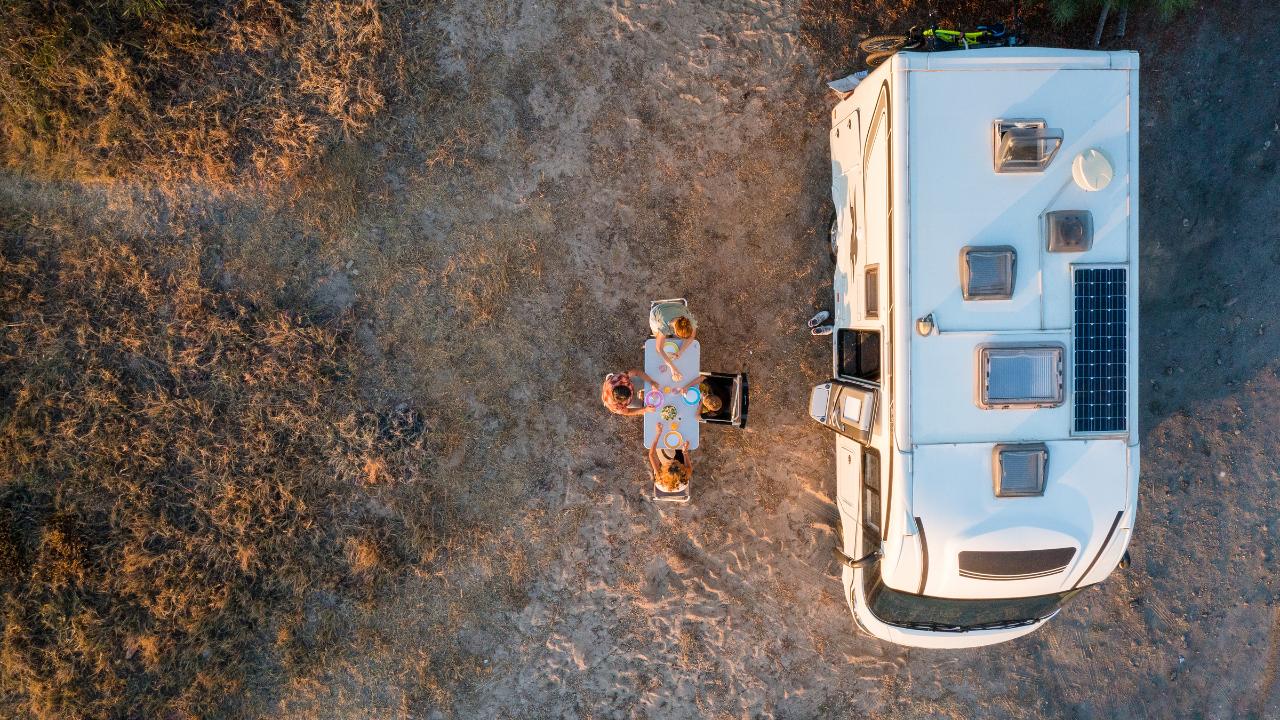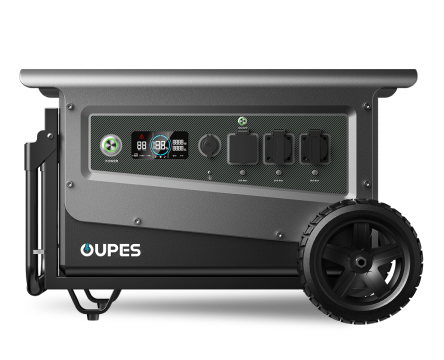
Overview
Off-grid living has become increasingly popular as people seek independence, sustainability, and resilience against power outages, natural disasters, and rising energy costs. According to data from the U.S. Department of Energy (DOE), over 300,000 American households operate either fully or partially off-grid, relying on self-generated power and decentralized water and food systems.
This comprehensive guide explains the essential elements of off-grid living—energy, water, food, shelter, and sanitation—and emphasizes the role of solar generators and portable power stations in creating a reliable, maintainable off-grid lifestyle. Portable systems produced by brands like OUPES offer a flexible solution for beginners and experienced homesteaders.
What Does It Mean to Live Off the Grid?
1. Disconnection from Public Utilities
To live off the grid, you operate independently from government or commercial utilities—electricity, water, and sometimes sewage services. Most off-grid households generate their own power, collect their own water, and manage waste on-site.
2. Self-Sufficiency and Resource Management
Off-grid living requires daily planning and resource management. Energy storage, water filtration, and food production become routine responsibilities.
3. Legal and Zoning Considerations
Some areas allow full off-grid living, while others require certain utility connections. Local zoning laws should be checked before starting a homestead.
Building a Reliable Off-Grid Energy System
Energy is the backbone of modern off-grid living. A stable system should support lighting, refrigeration, communication, tools, and in some cases heating or cooling.
1. Solar Power: The Core of Most Off-Grid Systems
Solar energy is the most common off-grid power source due to its low operational cost, long lifespan, and reliability. According to the National Renewable Energy Laboratory (NREL), most U.S. regions receive enough sunlight to sustain off-grid solar systems year-round.
2. Battery Storage
Lithium-iron phosphate (LiFePO4) batteries are the preferred choice for off-grid living, offering longer lifespans (4000+ cycles), stable thermal performance, and high safety. They store excess solar energy for use at night or during cloudy weather.
3. Backup Systems
Even the best solar systems need backup options:
- Portable power stations
- Gas generators (for emergencies)
- Wind or micro-hydro systems (depending on the location)
4. Energy Efficiency Matters
Reducing consumption is just as important as generating power. Energy-efficient refrigerators, LED lights, induction cooktops, and low-wattage electronics help maintain system stability.
Water Collection and Purification Methods
1. Rainwater Harvesting
Rainwater systems are legal in most U.S. states and can supply year-round water. A well-designed system includes gutters, filters, storage tanks, and disinfecting equipment. The EPA notes that rainwater harvesting can reduce household water needs by up to 50%.
2. Wells and Groundwater
Wells provide reliable long-term water supply but require testing for contaminants such as arsenic, nitrates, and bacteria, as recommended by the U.S. Geological Survey (USGS).
3. Filtration and Sterilization
- Reverse osmosis
- Activated carbon filters
- UV sterilization
- Ceramic gravity filters
4. Water Conservation Strategies
Off-grid homes often use low-flow fixtures, greywater recycling, and strategic water timing (such as irrigation during early morning).
Food Production & Long-Term Storage
1. Gardening and Crop Planning
Off-grid households rely on seasonal gardens. USDA planting zone maps help determine crops such as potatoes, beans, leafy greens, tomatoes, and fruits.
2. Livestock and Protein Sources
Many off-grid homesteads incorporate chickens, goats, bees, or aquaponic systems to increase protein diversity.
3. Food Preservation
To maintain food stability year-round, preservation methods include:
- Canning
- Dehydrating
- Fermentation
- Freeze-drying
4. Refrigeration
Efficient DC-powered fridges or low-wattage AC units powered by solar generators help maintain food safety. A portable power station can supply essential refrigeration during cloudy or low-output days.
Shelter & Infrastructure Requirements
1. Housing Types
- Cabins
- Earth-sheltered homes
- Tiny houses
- RVs and converted vans
2. Heating and Cooling
Wood stoves, passive solar design, and high-insulation materials help minimize energy use. Cooling strategies include natural ventilation, shade structures, and evaporative coolers in dry climates.
3. Tools and Maintenance
Off-grid living requires regular maintenance of solar equipment, batteries, water systems, and structural components. Having essential tools reduces long-term costs and improves resilience.
Waste & Sanitation
1. Composting Toilets
Composting toilets reduce water consumption and are approved for off-grid use in many regions. They convert waste into compost through aerobic decomposition.
2. Greywater Systems
Treated greywater can be used for irrigation, reducing overall water demand.
3. Waste Reduction
Recycling, composting, and bulk purchasing help limit trash and reduce transport needs.
Role of Portable Solar Generators
Portable solar generators and power stations are essential tools for off-grid living—both as primary energy components and as backup systems.
1. What They Provide
- Reliable off-grid AC and DC power
- Battery storage for nighttime use
- Solar recharging capabilities
- Mobility for RVs, cabins, and camps
2. Why They Are Important
During equipment failure or low-sunlight days, a portable power station can keep essentials running—including lighting, communication devices, medical devices, and refrigeration. Brands like OUPES produce high-capacity solar generators that support long-term off-grid setups.
3. Advantages Over Traditional Generators
- Silent operation
- No fuel storage required
- Zero emissions
- Indoor-safe usage
System Comparison Table
| Power System | Off-Grid Suitability | Maintenance Level | Typical Use |
|---|---|---|---|
| Solar + Battery System | Excellent | Low | Cabins, homes, long-term homesteads |
| Portable Solar Generator | Good | Very Low | RVs, tiny homes, mobile life |
| Gas Generator | Fair | Moderate | Short-term backup and emergencies |
| Wind or Micro-Hydro | Location-Dependent | Moderate | Rural areas with natural resources |
FAQ
1. Is it legal to live fully off-grid?
Yes, in most rural areas. However, some counties require minimum utility connections. Always check local zoning laws before starting an off-grid project.
2. How much solar power do I need to live off-grid?
Most homesteads require 5–10 kWh of daily energy. An array of 2–6 kW paired with lithium storage typically provides stable power, depending on location.
3. Are portable solar generators enough for off-grid living?
Yes, for small homes, RVs, or basic cabins. Larger homesteads often use portable generators as backup systems. High-capacity units from companies like OUPES support refrigerators, tools, and electronics.
4. How do off-grid homeowners stay warm in winter?
Most rely on wood stoves, passive solar home design, and high insulation. Electric heating is generally avoided due to high power consumption.
5. Is off-grid living expensive?
Initial setup can be costly, but long-term living costs are significantly lower. Most homeowners recoup expenses within 5–10 years through reduced utility bills and lower consumption.




























